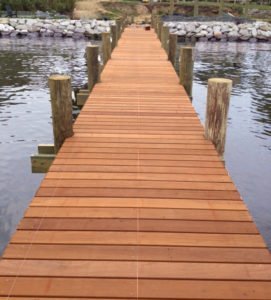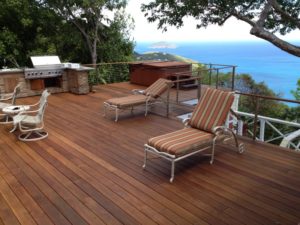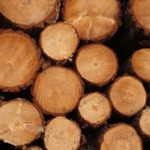At the end of 2022, the 19th Convention of Parties (CoP19) for CITES was held. Both Ipe and Cumaru were successfully uplisted to Appendix II. Many of us in the lumber biz saw this one coming. We have certainly written about Ipe and regulation in the past. There is a 24 month implementation period for both Ipe and Cumaru. However things are moving much faster in Brazil and changes to the processes are already in place. It seems appropriate to revisit CITES. What is CITES Appendix II? What exactly does it mean to be listed on Appendix II? What does it mean for the hugely popular tropical decking species?


In Danger of Becoming Endangered
Simply put, that is how Appendix II of CITES is defined. The current trade in the species is such that it needs to be watched. The species is not endangered but the conference of the parties decides by vote that additional documentation and environmental findings be put in place for the international trade of the species to continue.
Appendix II includes species not necessarily threatened with extinction, but in which trade must be controlled in order to avoid utilization incompatible with their survival.
Its is important to remember however that CITES is not a legislative body. It does not make laws or enforce them. That is up to governments. Legislation like the US Lacey Act or the EUTR in Europe make the laws that says a shipment is “illegal” when things like CITES export/import permits are not obtained.
What CITES does is require that governments put into place an office that will issue permit documentation for export and/or re-export. Also import permits. By and large Appendix II species do not require an Import permit. This applies only to Appendix I species (those are endangered). National governments can decide that import permits ARE required however. So it is important to pay attention to this especially when a species may be sourced from several different countries. Once listed on Appendix II, a Non Detriment Finding (NDF) must be performed by a third party scientific authority. This assesses trade impact on the environmental sustainability of the species.
Additional Paperwork required…
What this means is that Ipe and Cumaru now will require an additional piece of paperwork: the export permit. This is IN ADDITION to the required documentation for export to be in accordance with the Lacey Act. We do expect that this additional documentation could cause some delays in export. Expect this to cause shortages in supply here in North America. Ultimately it is a question of whether or not a bottleneck will slow things down. Brazil has stated they will be requiring onsite inspections of export material in order for the permit to be issued. Depending on the size of that inspection team this could cause a significant delay.
Despite the 24 month implementation period, Brazil has stated that any Ipe or Cumaru harvested after Feb 1st 2023 will require a CITES permit for export. In addition, Ipe or Cumaru harvested prior to that date will require a CITES permit on July 1st, 2023. This is our understanding as of the published date of this article, but these “normatives” are subject to change.
The Data Show Ipe & Cumaru are not endangered
The reality is neither Ipe nor Cumaru are scarce. This was a point made very well by Brazil during CoP19. The blockchain based system used by IBAMA (Brazilian Forest Ministry) to track lumber and the extensive concession management plans provides clear insight into the sustainability of both species. Also the long term plans to maintain that sustainability. The conversations at the convention surrounding the Ipe & Cumaru proposals were particularly interesting and served to show how outdated much of CITES is in comparison to the actual forestry management systems being used in these high trade species countries.
If you want more information the livestreams of these sessions are available to watch on CITES’ YouTube channel. Brazil’s presentations on proposal 48 (Cumaru) and concerning proposal 44 on Ipe in particular and ensuing supporting data both tell a strong story about the health of both of these species as well as the regulation already in place.
Trade is not contributing to the decline of [Ipe] in our country, quite the opposite. Sustainable management projects are a part of our policy to keep the forest up, to avoid deforestation. When we create new bureaucracy and barriers to trade and when we increase costs, we are discouraging these projects. We are allowing for people who live in the forest to look for other ways of surviving. Remember that our information management and control systems can be considered as the most robust in the world. All our information management systems are now digital and we are well equipped to manage these projects.
It is worth the time to watch these videos to learn a lot about how modern silviculture and trade management can be done for highly popular species. However you can also see how the data presented about the widespread nature of the species and extensive concession management and oversight did little to change the agendas of the nations that voted for the inclusion on Appendix II.
What Happens Now to Ipe & Cumaru
Its natural to expect some delays as these changes are implemented. The reality is that none of this changes how we import either Ipe or Cumaru. The third party audits, onsite visits, and chain of documentation a mile long that we use for ALL of our imported woods will continue as usual. An additional permit will be required but all the background vetting and checking to be able to qualify for that permit is already in place. As mentioned above we do anticipate some bottlenecks in the system that frankly could raise the prices of Ipe and Cumaru.
As the market changes and regulations become clearer, we will keep you all informed. In the meantime if you have specific questions about the sustainability of the lumber provided by J. Gibson McIlvain, we welcome a conversation. We are happy to share documentation and chain of custody on specific stock that relates to any upcoming project. As stated before, this is business as usual for us. Sustainability is at the heart of our business and the products we carry. You don’t stay in the lumber business for more 225 years without an eye on maintaining a consistent supply of lumber. That supply MUST rely on sustainable forestry.









Leave a Reply